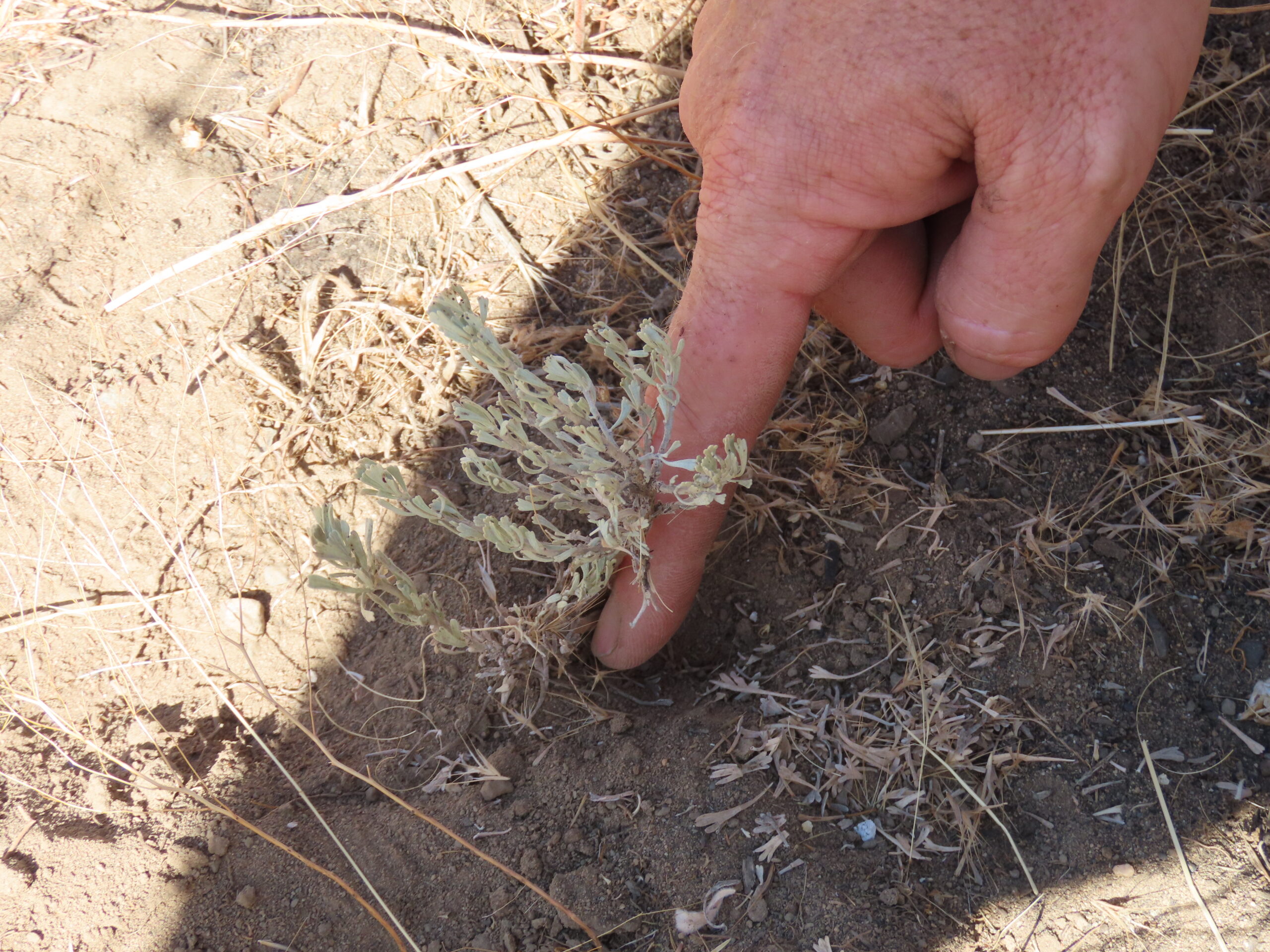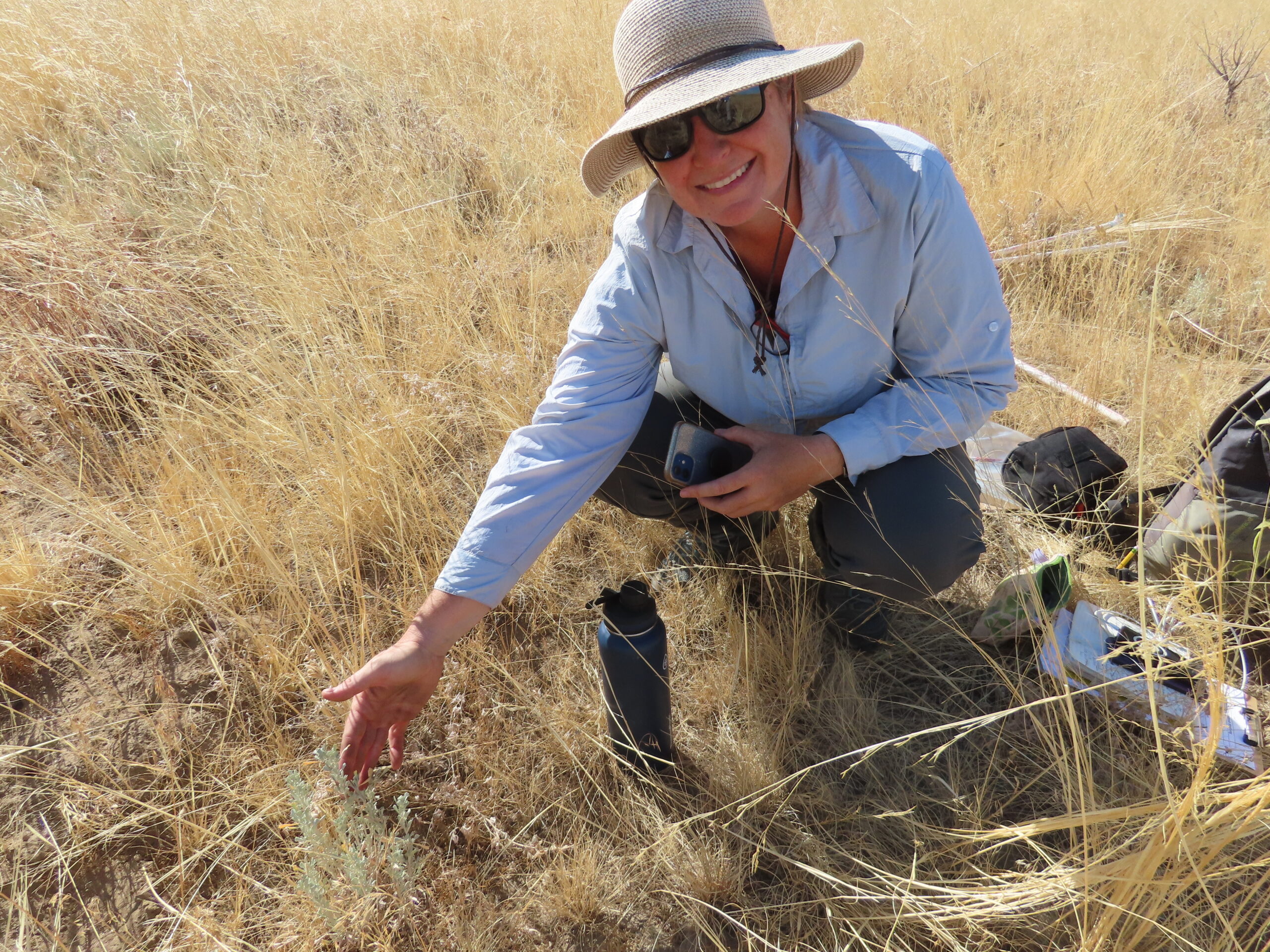Chelan-Douglas Land Trust
Why Bird Conservation?
When devastating wildfires swept through Washington in September of 2020, they burned much of the remaining Greater Sage-Grouse and Sharp-tailed Grouse shrubsteppe habitats in the region. Prior to the 2020 fires, Greater Sage-Grouse and Sharp-tailed Grouse occupied only 8% and 3%, respectively, of their historic range within the state of Washington—so the habitat was extremely limited even before the fires.
Part of this remaining range is in central Washington, on land owned and conserved by Chelan-Douglas Land Trust (CDLT). Traditionally, CDLT’s 1,396-acre Spiva Butte Nature Preserve (SBNP) provided nesting and wintering habitat for Greater Sage-Grouse—a species listed as near threatened by the International Union for Conservation of Nature—and Sharp-tailed Grouse, both of which are endangered in the state of Washington and had been observed in areas close to SBNA. Unfortunately, the fire burned 100% of the property, and big sagebrush, the plant that provides critical cover and food for grouse, was eliminated.
Populations of both species of grouse are at a small fraction of their historical numbers, due primarily to the destruction and degradation of native sagebrush-dominated shrubsteppe habitat, which has been cultivated for the production of crops like wheat and grazed by livestock since the region was settled by European immigrants in the 1800s. Before the fires, SBNP was one of the highest quality deep-soiled shrubsteppe habitats remaining in northern Douglas County, and it was also a culturally important indigenous hunting and gathering area.

After the wildfires, it was important for CDLT staff to act quickly to jumpstart the habitat recovery process and prevent the establishment of invasive plant species. Plant ecologists advised that CDLT had a short window of time, essentially two autumns after the fire, to plant sagebrush seedlings before resprouting natives would take hold of the site, leaving no room for sagebrush. Before the fire, the three forks of the creek that runs through SBNP were degraded with incised channels and few native deciduous shrubs and trees due to historic past cattle use. The fire burned the non-native streamside trees, presenting an opportunity to establish native species in riparian areas, especially water birch, a critical winter food for Sharp-tailed Grouse.
Inspired to take action, CDLT biologist Joe Veverka (now with The Nature Conservancy), supported by CDLT Conservation Fellow Susan Ballinger, worked with local partners to submit an application for a small grant from the Land Trust Bird Conservation Initiative to restore areas of Spiva Butte Nature Preserve. “This was the right grant at the right time,” says Ballinger, who helped implement the successful $25,000 grant project in 2022.
Spotlight Resources: Bird-friendly Habitat Management, Volunteers, eBird
Sagebrush-dominated shrubsteppe habitat is generally resilient to wildfire. Nearly all the native wildflowers and shrubs in the ecosystem have long-lived roots that resprout after fires. However, big sagebrush, which is an umbrella species and a key component of the sagebrush ecosystem, spreads only by seed. The plants produce seeds prolifically, and the seeds are distributed by wind, up to about 100 feet—which works well when there are other sagebrush plants in the landscape. But after the wildfires burned over 410,000 acres in the region, there were no sagebrush plants left within 100 feet of CDLT’s Spiva Butte Nature Preserve.

As Ballinger says, this was extremely problematic for the future of Greater Sage-Grouse, because “without big sagebrush, you can’t have successful rearing and reproduction of Greater Sage-Grouse.” She explains that sagebrush leaves are the critical food of wintering Greater Sage-Grouse, females of the species build nests under sagebrush, and adults feed their young insects that are tied to the sagebrush ecosystem.
A small nonprofit, CDLT is nimble and was able to act quickly to secure funding to reestablish sagebrush on Spiva Butte Nature Preserve, but there was one big challenge: there were no sagebrush seedlings to be found at local nurseries. Because the plant is usually so common across the landscape, no one grows sagebrush seedlings.
Only six weeks after the fire, CDLT devised a plan. Knowing it takes eight months to grow a sagebrush seedling and that they had a two-year window to restore the sagebrush habitat, CDLT worked with volunteers to start collecting sagebrush seed. Over two seasons, 70 local volunteers collected seeds, mostly near Spiva Butte Nature Preserve, using their own garages for drying and processing the seeds during the first months of the COVID-19 pandemic. They managed to collect so much seed that they were able to share their supply with over 20 different agencies who were also working to reestablish sagebrush in the region.
Sagebrush grows well once established, and since CDLT did not want to create a monoculture of sagebrush across the preserve, Ballinger worked with a native plant restoration company to establish island plantings. These two-acre plantings were strategically placed in 18 specific locations where the wind will blow sagebrush seed across the landscape. Altogether, CDLT planted over 13,000 sagebrush seedlings.

To restore habitat for Sharp-tailed Grouse, which is dependent on riparian habitat for winter food, CDLT implemented another targeted strategy. In 28 acres of carefully selected micro-habitat sites along Deep Creek, CDLT planted native riparian shrubs and trees and installed eight-foot fences to protect the seedlings from browsing mule deer herds.
Situated along the Western Flyway, Spiva Butte Nature Preserve is important habitat for many bird species other than grouse. With a permanent pond, the property supports the migration of waterfowl flying over arid land, and it’s a breeding site for many neotropical migrants, too.
To assess the impact of the habitat management practices on bird populations, CDLT’s Joe Veverka worked with volunteers from North Central Washington Audubon to conduct bird monitoring surveys. From June 2022 to May 2023, eight rounds of survey data were recorded in eBird (excluding December to March, when the property was inaccessible due to snow). During this monitoring, 68 bird species were detected, including Swainson’s Hawk, Northern Shrike, Sage Thrasher, Lincoln’s Sparrow, American Coot, and several warbler species. These eBird checklists will serve as a baseline for future bird monitoring as the property recovers from the fires of 2020.
Making the Connection

“The value of the eBird data goes beyond this single property,” notes Ballinger. For example, Ballinger recently cited the eBird data from Spiva Butte in a competitive grant application for state funds. Seeking funding to assist with a project a mile away from Spiva Butte, Ballinger highlighted the state priority bird species that were observed nearby during eBird monitoring at the restoration site.
CDLT was the first organization in the region to begin restoring sagebrush after the wildfire, and partners at state agencies are very aware of the impact these efforts have made to this important ecosystem. Michael Schroeder, a research scientist from the Washington Department of Fish and Wildlife, says “this habitat, and the areas around it, supports two species that are listed as endangered in the state of Washington.”
After the fire, CDLT staff observed a sign of hope at Spiva Butte when they spotted Greater Sage-Grouse at the property, part of the traditional home range of the species. And a silver lining of the 2020 wildfires is that the Washington State legislature has recognized the value of sagebrush ecosystems, funding the Washington Shrub-Steppe Restoration and Resiliency Initiative, a collaborative effort dedicated to conserving the state’s shrubsteppe wildlife and habitat.
Advice to Other Land Trusts

As a small organization, CDLT operates with a tight budget, and because Spiva Butte is located in a fairly remote area, they needed additional capacity to take on this project. Having staff time funded through their Land Trust Initiative small grant enabled CDLT to prioritize the restoration project at Spiva Butte.
This project was completed by leveraging funds from a number of programs, including U.S. Fish and Wildlife Service and NRCS’ Environmental Quality Incentives Program (EQIP). The initial funding from NRCS was made possible because of a local person from the agency who believes in the importance of shrubsteppe habitats. Small grant funding from the Cornell Lab pushed CDLT and partners across the finish line in meeting initial post-fire restoration goals at Spiva Butte. “Projects like this are all about relationships,” notes Ballinger.

Next Steps
“We need to be ready for the next fire,” says Ballinger. Recognizing the increasing frequency of wildfires in the region, Ballinger says that CDLT staff is preparing to offer support to landowners of properties protected by conservation easements when the next fire happens.
“We can’t tell them what to do, but we can offer them technical support. And now, we have a demonstration area that serves as an example of successful restoration to show them at Spiva Butte Nature Preserve,” says Ballinger.
